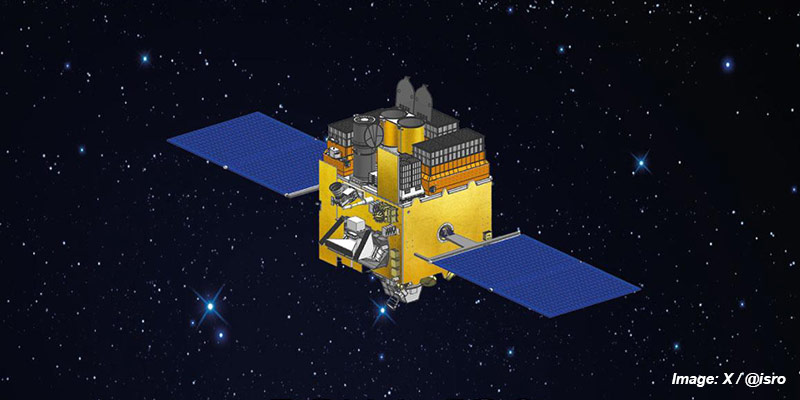- India
- Sep 30
AstroSat completes 10 years in orbit
• AstroSat, India’s first observatory dedicated for astronomy, by the Indian Space Research Organisation (ISRO) completed a decade of operations.
• AstroSat was launched by PSLV-C30 from Satish Dhawan Space Centre in Sriharikota on September 28, 2015.
Key points of AstroSat:
• AstroSat is India’s first dedicated multi-wavelength space observatory.
• It weighed 1,515 kg during launch. It was placed in a 650-kilometre high orbit, inclined at 6 degrees to the equator.
• It is a unique observatory designed to study celestial objects by observing their light in various wavelengths, including X-rays, visible light, and ultraviolet light.
• This multi-wavelength approach helps scientists gain a more comprehensive understanding of what is happening in space.
• After AstroSat was placed into orbit, the two solar panels that the observatory is fitted with were automatically deployed one after the other.
• The satellite is managed throughout its mission by the spacecraft control centre at the Mission Operations Complex (MOX) of ISRO Telemetry, Tracking and Command Network (ISTRAC), in Bengaluru.
• The science data collected by the five instruments on AstroSat is sent back to the ground station at MOX. This data is then processed, archived and distributed by the Indian Space Science Data Centre (ISSDC) located in Byalalu, near Bengaluru in collaboration with the Inter-University Centre for Astronomy and Astrophysics (IUCAA), Pune.
• AstroSat stands out among global satellites because it can observe multiple wavelengths at the same time.
• For example, NASA’s Hubble Space Telescope mainly looks at near ultraviolet, visible and near-infrared light, while the Chandra X-ray Observatory focuses on X-rays.
• In contrast, AstroSat can see from far ultraviolet light all the way to a wide range of X-rays using its different instruments.
• This versatility makes it a valuable tool for a variety of astronomical research.
Major accomplishments of AstroSat mission:
i) Witnessing the ‘live’ formation of dwarf galaxies.
ii) Detection of UV light emission from a galaxy at 9.3 billion light years away from Earth.
iii) Solving a decade-old puzzle of a source displaying both hot and cold emission characteristics.
iv) Discovery of X-Ray polarisation in the crab nebula.
v) Identification of quasi-periodic oscillations of a black hole system as dynamical frequency.
vi) Witnessing of the ‘birth of the black holes’.

